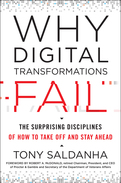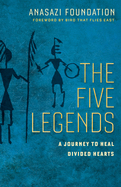BK Blog Post
Five Surprise Bestsellers
 Posted by
Jeevan Sivasubramaniam,
Vice President, Editorial,
Berrett-Koehler Publishers Inc.
Posted by
Jeevan Sivasubramaniam,
Vice President, Editorial,
Berrett-Koehler Publishers Inc.
The following books were all summarily rejected by numerous publishers and/or projected to have very limited sales.
The following books were all summarily rejected by numerous publishers and/or projected to have very limited sales. They went on to become legendary bestsellers:
1. Jonathan Livingston Seagull by Richard Bach (Turnstone Press, 1970)
Even the author's agent was not keen on this somewhat odd story about a talking seagull's quest. The first printing was for just 7,500 copies, which would account for its lifetime sales, said the publisher. It went on to sell many millions of copies in both English and over fifty other languages.
2. A Year in Provence by Peter Mayle (Hamish Hamilton, 1989)
Advertising executive Peter Mayle's memoir about his time in the French countryside was acquired with the promise that the first print run would not exceed 3,000 copies and expectations for it were low. Not only did the book become a smash hit that has sold over a million copies, but it launched a new genre: the experiences of expatriates worldwide. Now, a highly successful television series later, the book continues to sell.
3. Eats, Shoots & Leaves by Lynne Truss (Profile, 2003)
This book was never expected to be much of a seller because, well, no one ever thinks that a book about proper punctuation could ever become a bestseller. Yet, in a year packed with all manner of high-profile releases, Truss's book went on to become a #1 bestseller on various lists and continues to sell to this day.
4. The F-Plan by Audrey Eyton (Penguin 1982)
Though diet books are quite the rage these days, that's a very recent development. More than a couple of decades ago, they were still rare. Eyton's book promoted the consuming of large amounts of fiber (an idea that remains popular to this day) to promote weight loss. It sold over one million copies and is credited with helping to spawn the diet book revolution.
5. Watership Down by Richard Adams (Rex Collings, 1972)
Several London publishers passed on the opportunity to publish this book because they saw limited appeal for a hefty book about rabbits. The tiny firm of Rex Collins printed 2,000 copies of the book. In the following ten years, it went on to sell more than five million copies and still sells to this day.
1. Jonathan Livingston Seagull by Richard Bach (Turnstone Press, 1970)
Even the author's agent was not keen on this somewhat odd story about a talking seagull's quest. The first printing was for just 7,500 copies, which would account for its lifetime sales, said the publisher. It went on to sell many millions of copies in both English and over fifty other languages.
2. A Year in Provence by Peter Mayle (Hamish Hamilton, 1989)
Advertising executive Peter Mayle's memoir about his time in the French countryside was acquired with the promise that the first print run would not exceed 3,000 copies and expectations for it were low. Not only did the book become a smash hit that has sold over a million copies, but it launched a new genre: the experiences of expatriates worldwide. Now, a highly successful television series later, the book continues to sell.
3. Eats, Shoots & Leaves by Lynne Truss (Profile, 2003)
This book was never expected to be much of a seller because, well, no one ever thinks that a book about proper punctuation could ever become a bestseller. Yet, in a year packed with all manner of high-profile releases, Truss's book went on to become a #1 bestseller on various lists and continues to sell to this day.
4. The F-Plan by Audrey Eyton (Penguin 1982)
Though diet books are quite the rage these days, that's a very recent development. More than a couple of decades ago, they were still rare. Eyton's book promoted the consuming of large amounts of fiber (an idea that remains popular to this day) to promote weight loss. It sold over one million copies and is credited with helping to spawn the diet book revolution.
5. Watership Down by Richard Adams (Rex Collings, 1972)
Several London publishers passed on the opportunity to publish this book because they saw limited appeal for a hefty book about rabbits. The tiny firm of Rex Collins printed 2,000 copies of the book. In the following ten years, it went on to sell more than five million copies and still sells to this day.






